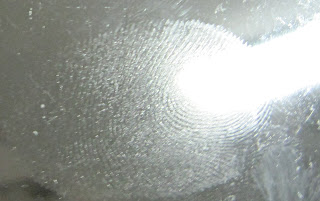We believed that Jet Trong was a drug dealer for Sandra O’Connor (explains his fingerprint, which would have been found on a bag of drugs), who was a homeless drug addict. The sneakers were found on her, because she needed good outdoor shoes for living in the woods. Lucas Moore was walking his dog (explains the dog hair found on scene) out in a wooded area & came across Sandra doing cocaine (the liquid tested positive for cocaine) so he decided to inject with her (explains the syringe/needle.) Sandra overdosed on the cocaine & dies right on the scene. Lucas was afraid of being caught with cocaine so he wrote a fake suicide note pretending to be Sandra, saying “Please forgive me! I love you all.” And walked away (explains shoe walking away from crime scene) The body was left for so long that it started to decay & when someone found it, it was already infested with maggots.
The breaking point of our investigation was when we tested the liquid to be cocaine positive, because it gave good reason for Jet & Sandra to be involved. Sandra was a drug addict after all, which explains the OD!

















































